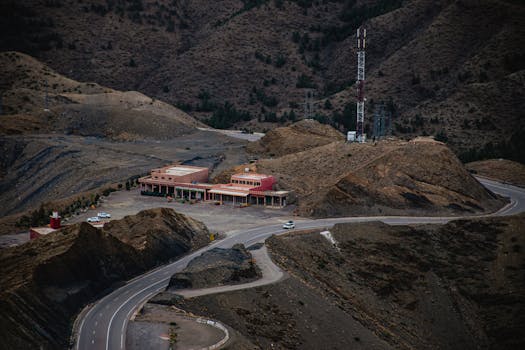
Mapping the Fiber Landscape: Key Players and Projects Across Africa – Fiber Optics & Connectivity
Africa’s telecommunications sector has experienced significant growth over the past decade, driven by the increasing demand for high-speed internet and mobile connectivity. At the heart of this growth is the development of fiber optic infrastructure, which has become a critical component of modern telecommunications networks. In this article, we will delve into the fiber landscape in Africa, exploring key players, ongoing projects, and the impact of these developments on the continent’s telecommunications sector.
Introduction to Fiber Optics in Africa
Fiber optic technology has revolutionized the way data is transmitted over long distances, offering faster speeds, greater reliability, and lower latency compared to traditional copper-based networks. In Africa, the adoption of fiber optics has been driven by the need for high-speed internet and mobile connectivity, particularly in urban areas. Several key players have emerged as major investors in Africa’s fiber optic infrastructure, including telecommunications companies, internet service providers, and infrastructure developers.
One of the most significant fiber optic projects in Africa is the African Coast to Europe (ACE) submarine cable, which spans over 17,000 kilometers and connects 25 countries across the continent. The ACE cable has played a critical role in enhancing internet connectivity in West Africa, with landing points in countries such as Nigeria, Ghana, and Senegal. Other notable fiber optic projects in Africa include the East African Submarine Cable System (EASSy) and the West African Cable System (WACS), which have further expanded the continent’s international connectivity.
Key Players in Africa’s Fiber Landscape
Several key players have emerged as major investors in Africa’s fiber optic infrastructure, including telecommunications companies, internet service providers, and infrastructure developers. Some of the most notable players include MTN, Vodacom, and Orange, which have all made significant investments in fiber optic infrastructure across the continent. Other key players include Liquid Telecom, which has developed an extensive fiber optic network across Eastern and Southern Africa, and Main One, which has invested heavily in fiber optic infrastructure in West Africa.
In addition to these private sector players, several governments and development institutions have also invested in Africa’s fiber optic infrastructure. The African Development Bank, for example, has provided financing for several fiber optic projects across the continent, while the World Bank has also invested in initiatives aimed at expanding internet connectivity in Africa. The African Union has also launched several initiatives aimed at promoting the development of fiber optic infrastructure, including the African Broadband Strategy, which aims to increase broadband penetration across the continent.
Impact of Fiber Optics on Africa’s Telecommunications Sector
The development of fiber optic infrastructure has had a significant impact on Africa’s telecommunications sector, driving growth, innovation, and investment. Fiber optics has enabled the deployment of high-speed internet and mobile connectivity, which has transformed the way people live, work, and communicate. The increased availability of high-speed internet has also driven the growth of e-commerce, online banking, and other digital services, which have created new opportunities for businesses and individuals across the continent.
The development of fiber optic infrastructure has also attracted significant investment in Africa’s telecommunications sector, with several major operators and investors committing to expand their operations on the continent. The growth of fiber optics has also created new job opportunities, both directly and indirectly, with thousands of people employed in the construction, maintenance, and operation of fiber optic networks.
Challenges and Opportunities in Africa’s Fiber Landscape
Despite the significant progress made in developing Africa’s fiber optic infrastructure, several challenges remain, including the high cost of deployment, regulatory barriers, and security concerns. The cost of deploying fiber optic infrastructure can be prohibitively expensive, particularly in rural areas, where the lack of existing infrastructure and low population density make it difficult to achieve economies of scale. Regulatory barriers also pose a significant challenge, with many countries having complex and often overlapping regulatory frameworks that can make it difficult to deploy fiber optic infrastructure.
Security concerns are also a major challenge, with fiber optic infrastructure vulnerable to damage, theft, and sabotage. In some countries, fiber optic cables have been targeted by vandals and thieves, disrupting internet connectivity and causing significant economic losses. To address these challenges, several initiatives have been launched, including the development of new technologies and business models that can reduce the cost of deployment and improve the security of fiber optic infrastructure.






